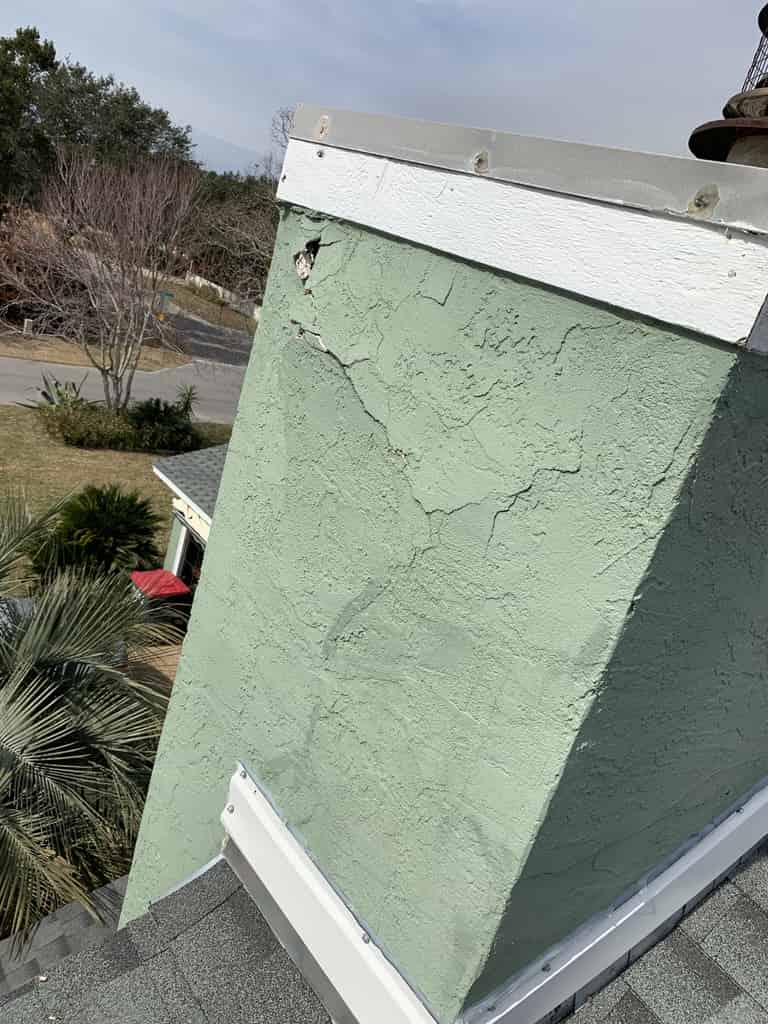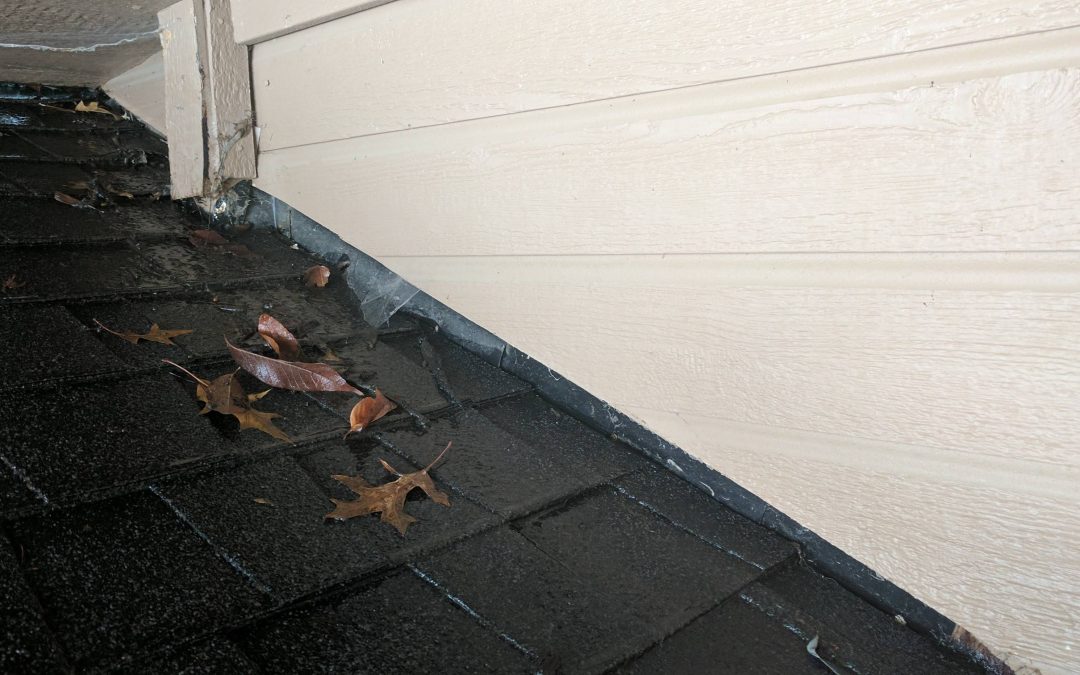Waterproof Your Chimney
Water penetration is a major cause of deterioration and damage to your chimney. If you think waterproofing your chimney is a waste of money, think again.
One of the most common reasons for the water to leak into your fireplace is physical damage or wear and tear to the chimney. The portion of your chimney that extends outside of your home faces near-constant exposure to the elements, including rain, snow, high wind, and sun exposure.
All these factors can degrade the masonry of your chimney eventually causing cracks and chips. Your chimney is a much more complicated system than you might think, and narrowing down the exact source of a leak can be quite challenging. A water test should be performed on the chimney to see where the problem is coming from.
Water leaks are one of the hardest problems to detect in a chimney system. Water is your chimney’s biggest enemy, and a leaky chimney can lead to both interior and exterior deterioration and costly damage if neglected.
Masonry chimneys may look and seem indestructible, but they’re not. They’re constructed of a variety of masonry and metal materials, including brick, mortar, concrete block, stone, flue tile, steel, and cast iron – all of which (except stone) are adversely affected by direct contact with water or water penetration.
Masonry materials deteriorate even more rapidly when exposed to the freeze/thaw process, in which moisture penetrates the materials and periodically freezes and expands, causing undue stress. And depending on where you live, your chimney may be exposed to the freeze/thaw process for as many as six months or so.
Some masonry problems are obvious. If broken bricks, large cracks, and crumbling mortar are present you know that the masonry is a problem.
If you see that the flashing at the bottom of the chimney is rusted, warped or the sealant is no longer intact that’s a problem. But what if it is not obvious, what if all of the above is in good condition?
How do you detect a leak that is not obvious?
One good way to try and pinpoint a general area through which the water is entering is to do a water test.
This test can be time-consuming as a garden hose is used to soak the chimney from the bottom of the chimney to the top, stopping every few feet to let the water soak in for about fifteen minutes, and Journaling about times and whether you are soaking the left or right side of the chimney.
By using this method you will be able to see how the water is entering your home. Although you could do a water test yourself it is not recommended as walking on a wet roof, without safety equipment can be very hazardous.
A professional chimney sweep should be called out to do this test. Leaks can be costly and destructive.
Most standard homeowners insurance policy (HO3) covers chimney repairs if a covered peril caused the damage.
Your chimney is considered part of your home’s structure, so its coverage mirrors your dwelling’s coverage. It does not cover maintenance or other uncovered perils.
Homeowner’s insurance companies will cover many types of chimney damage. Many other types of damage will be denied. If your chimney has suffered damage, your insurance carrier will outline in detail the damages your homeowner’s policy will pay for. Most homeowner’s insurance policies are written to cover “unexpected” damages to a chimney system.
Causes of this kind of damage include Earthquakes, high-powered wind storms, lightning strikes, falling trees and/or branches, pounding hail, and some chimney fires.
These and similar causes are considered unexpected because the homeowner didn’t directly cause them and generally couldn’t have prevented them. On the other side, there’s damage that’s considered “expected” and usually stems from the homeowner’s neglect to properly maintain and care for his or her chimney.
Homeowner’s insurance carriers usually are not willing to pay for chimney issues that could have been prevented. However, you won’t know specifically what your provider will and won’t cover until you either closely read your policy or speak with an agent. You can avoid serious “expected” chimney damage by being proactive and making sure your chimney system is well-cared for. Along with cleaning, chimneys should be professionally inspected once a year to uncover early signs of damage and malfunction so they can be addressed before they become serious and possibly dangerous.

Never put off chimney repairs
No matter how “insignificant” they may seem, minor damage very often progresses to complicated and expensive damage. Not only can water leaks cause damage to your home but can make your fireplace look shabby and unkempt.
one problem is called efflorescence, this is formed when problems occur with the chimney masonry which lets in excess water to the structure.
This could include chimney material cracks, a chimney that has not been properly sealed, or is missing a cap or other sealant. This defect allows rainwater to seep into the brick or stone walls. As water moves through the wall, it dissolves salt particles naturally present in the masonry along the way. The water will then evaporate through the outside wall and leave behind the salt residue on the surface.
These salt deposits create the white residue left on the chimney surface. While the salt deposits themselves are mostly an aesthetic problem and will not cause structural damage, they are a tell-tale sign of excess water present within the structure. The visible salt residue is a sure sign of water leaking into the stone structure and if left alone, can cause serious damage to the structure.
The best way to take care of efflorescence is to never get it! It is difficult to guarantee efflorescence will not later develop when building a chimney, but there are ways to lessen the chances of its occurrence. By taking away any one of the 3 conditions listed above, efflorescence will likely not take place.
The most straightforward way to reduce the appearance of efflorescence is to use materials in the building process that do not contain large amounts of soluble salts or those that contain low alkali. Proper drainage away from the structure will also serve to prevent efflorescence from occurring.
Eliminating the source of the moisture will not allow the soluble solution to form in the first place. Otherwise, brick sealants in the building process and before efflorescence have begun will also prevent the deposits.
Annual maintenance performed by a professional chimney sweep will keep you from having any of these issues with your chimney.

